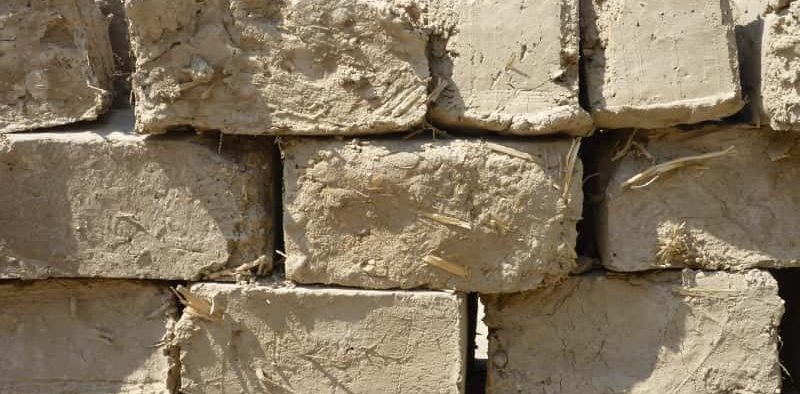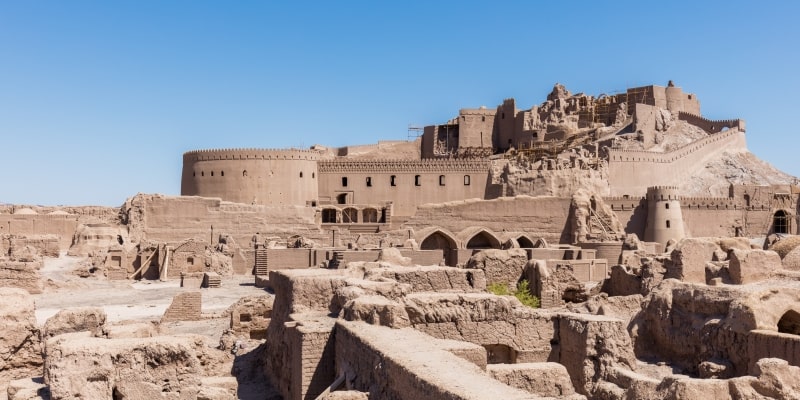Adobe is Spanish for ‘mudbrick’

Adobe is a building material made from earth and organic materials. Adobe is Spanish for ‘mudbrick’, but in some English-speaking regions of Spanish heritage, the term is used to refer to any kind of earthen construction.
Most adobe buildings are similar in appearance to cob and rammed earth buildings. Adobe is among the earliest building materials and is used throughout the world. Adobe bricks are rectangular prisms small enough that they can quickly air dry individually without cracking. As a green-building bonus, adobe’s mass helps keep buildings naturally cool in summer and warm in winter, reducing the need for air conditioning and heat.
In some areas a popular size measured 8 by 4 by 12 inches (20 cm × 10 cm × 30 cm) weighing about 25 pounds (11 kg); in other contexts, the size is 10 by 4 by 14 inches (25 cm × 10 cm × 36 cm) weighing about 35 pounds (16 kg). The maximum size can reach up to 100 pounds (45 kg).
The word Adobe has existed for around 4000 years with relatively little change in either pronunciation or meaning. The word can be traced from the Middle Egyptian (c. 2000 BC) word “mud brick”.
In more modern English usage, the term “adobe” has come to include a style of architecture popular in the desert climates of North America, especially in New Mexico, regardless of the construction method. An adobe brick is a composite material made of earth mixed with water and organic material such as straw or dung.
The soil composition typically contains sand, silt, and clay. Straw is useful in binding the brick together and allowing the brick to dry evenly, thereby preventing cracking due to uneven shrinkage rates through the brick. Adobe construction covers 14.6% of the total built environment of Pakistan. The majority of adobe houses comprise single-story structures with adobe masonry walls and timber roofs with mud covering.
The largest structure ever made from adobe is the Arg-é Bam built by the Achaemenid Empire. Other large adobe structures are the Huaca del Sol in Peru, with 100 million signed bricks and the ciudellas of Chan Chan and Tambo Colorado, both in Peru.
The citadel of Bam, Iran, or Arg-é Bam, in Kerman Province, Iran: The world’s largest adobe structure, dating to at least 500 BC.









